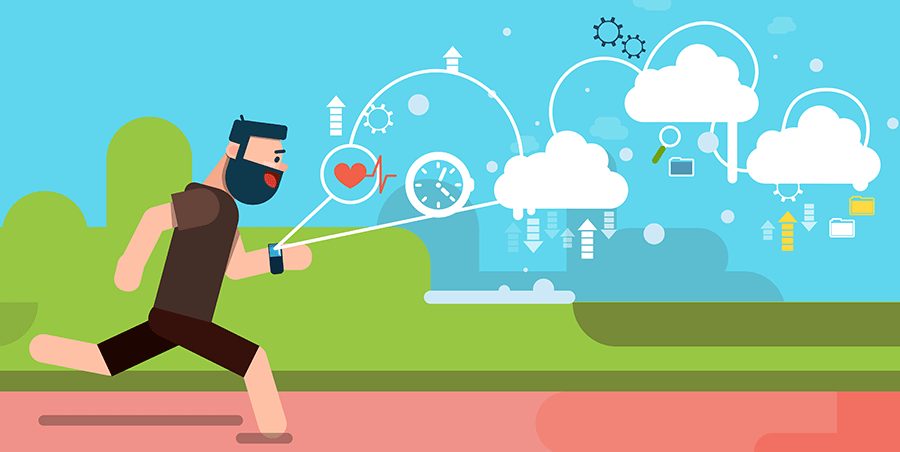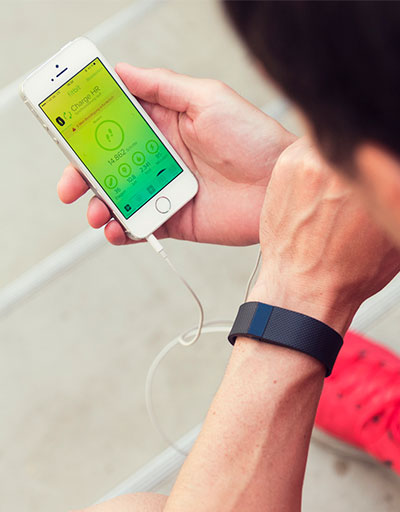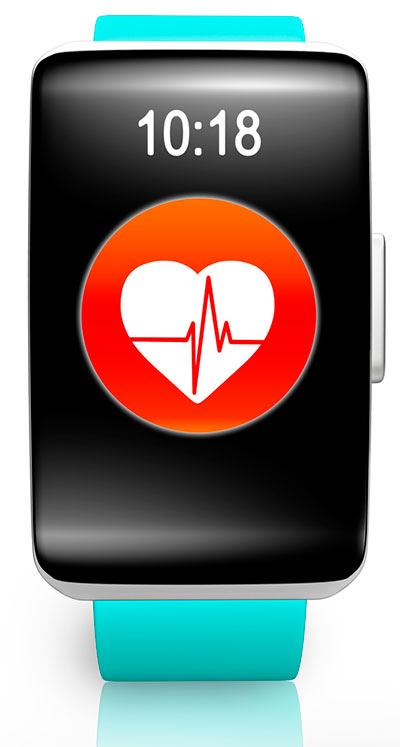Do Fitbits Work?
Do fitness trackers like Fitbits work? Do they help you lose weight and keep it off? You’d sure think so if you listened to the hype. They “redefine fitness,” exalts the Fitbit website. True? Find out what recently-published research says.

They’re Everywhere These Days
From track fields to shopping malls, people are donning brightly colored wristbands, armbands, watches, and other physical activity trackers. They tally up the number of steps we take. Many have additional features, like calories burned. They interface with our phones and computers in all sorts of bells-and-whistle ways.

But Do Fitbits Work?
Recently published, well-designed research raises doubts about the benefits of wearable activity trackers like Fitbit, Jawbone, Garmin, and CoreFit. The authors found that wearing an activity tracker in combination with a behavorial weight-loss program was not any better than the behavorial weight-loss program alone.
In fact, the participants without activity trackers ended up better off. At the end of 24 months, they had lost nearly twice the weight as those wearing trackers.
Participants with trackers shed on average 7.7 pounds. Those with no trackers dropped 13 pounds.
No Advantage
Concluded the study’s lead researcher John Jakicic, PhD, chair of the Department of Health and Physical Activity at the University of Pittsburgh, and colleagues: “While usage of wearable devices is currently a popular method to track physical activity – steps taken per day or calories burned during a workout – our findings show that adding them to behavioral counseling for weight loss that includes physical activity and reduced calorie intake does not improve weight loss or physical activity engagement.
“Therefore, within this context, these devices should not be relied upon as tools for weight management in place of effective behavioral counseling for physical activity and diet.”
Young Adults
At the beginning of their investigation, Dr. Jakicic and fellow authors were fairly confident that technology-enhanced, weight-loss interventions would result in greater weight loss, particularly among the tech-savvy group they were studying – young adults. The scientists had recruited 470 men and women between the ages of 18 and 35. All were overweight or obese.
All 470 participants were placed on a health and weight-loss program similar to the program taught for the last four decades at the Pritikin Longevity Center:
- A healthy eating plan that focused on low-calorie-dense foods like fruit, vegetables, whole grains, and legumes (beans),
- An exercise plan that improved overall fitness, and
- Group counseling sessions that taught skills for long-term success with a healthy lifestyle.
-
Months 1 – 6
For the first 6 months, all the participants were involved in weekly group counseling.
-
Months 7 – 24
Beginning in month 7, the researchers added telephone counseling sessions, text message prompts, and access to study materials on a website. And again, all participants were able to use these tools.
But also beginning in month 7, the participants were randomly divided into two groups.
-
Standard Intervention
The subjects in the first group, labeled “standard intervention,” were directed to self-monitor their eating and exercising habits using a website that regularly provided educational material on healthy living.
-
Enhanced Intervention
Those in the second group, called “enhanced intervention,” were each given a wearable tracker and accompanying web interface to monitor their physical activity.
Now, keep in mind that at 6 months, both groups had shed similar amounts of weight.
“Can I keep the weight off?”
“But as we all know, it’s what happens after those first few months of losing weight that is most critical. Can we keep the weight off? Can we lose more? Or does the weight start creeping back?” notes Kimberly Gomer, MS, RD, Director of Nutrition at the Pritikin Longevity Center.
-
Month 24
At month 24, both groups did show significant improvements in body composition, physical activity, and diet. However, the group that did not wear trackers shed nearly twice as much weight as the group that did, as summarized earlier in this article.
Body Fat
What’s more, the participants in the no-tracker group ended up with greater decreases in body fat. Their average body fat loss between months 1 and 24 was 3.5%. In the group wearing the trackers, body fat loss was 2.4%.
What’s Going On?
Why didn’t the activity trackers, especially this study’s tech-loving young adults, yield better results?
Magic Bullet Thinking
“But it could be that for some there’s an over-reliance on activity trackers. Some people might think of them as magic bullets. They may, for example, be very judicious about counting up their steps each day but let other aspects of healthy living, like their diet, slide.”
“I’ve earned it”
There might also be, at least for some of us, unhealthy rationalizations emerging, as in, “I tallied up more than 10,000 steps today. I’ve earned that chocolate mousse for dessert.”
Novelty Wears Off
After a few months, activity trackers might also lose their luster. Sitting on bedroom bureaus, they gather dust, not unlike exercise gimmicks from infomercials past.
“Is that all?”
And possibly, notes Dr. Jakicic and colleagues, step trackers might backfire for some folks. If activity readouts are lower than expected, some of us may get discouraged and decide, “That’s it, I quit. 10,000 steps is just too hard.”
The Good News:
In the study, there was a small number of people wearing trackers who lost significantly more weight than the average tracker-wearing participant. Dr. Jakicic and his team are analyzing why these people seemed to benefit while others did not.
Do Fitbits Work? | Bottom Line
“Activity trackers, in and of themselves, are probably not an effective weight-loss solution, but they can be beneficial for two other important purposes,” states Jamie Costello, MS, Fitness Director at Pritikin.
For people who are sedentary, “they’re often a great first step, a way to get up and get moving,” says Jamie. “Think of trackers like Fitbit, Jawbone, Garmin, and CoreFit as a transition step between being a couch potato and being in a formal exercise program like our Pritikin Program of cardiovascular conditioning, strength training, and flexibility.”

The other benefit of activity trackers is for people who are already involved in a formal exercise program. They’re working out an hour or so every day, but they want to make sure they’re not sitting the rest of the day. “For our health, it’s important to have both fitness goals and activity goals,” says Jamie. “Many of our alumni use – and enjoy – trackers to reach their activity goals.”
Heart Rate Monitors
“Now,” continues Jamie, “if a guest here at Pritikin asks me what sort of wearable device to invest in, I would recommend a heart rate monitor over a step tracker.
“That’s because a heart rate monitor tracks things, like your level of effort and intensity, that are really going to make a difference for your weight-loss goals, fitness goals, and overall health goals.”
“Bottom line,” says Jamie, “If you’re investing time in exercising, anywhere from 15 minutes to an hour each day, why not make sure you’re getting the most out of it? A heart rate monitor is best for helping you do that.”
There are some heart rate monitors that offer both functions: tracking your steps as well as monitoring your heart rate and intensity, “and that’s great,” encourages Jamie.
Complete Lifestyle Education
But what he and other faculty at Pritikin encourage most of all for good health and weight management is a complete lifestyle education, like the diet, exercise, and healthy-living program taught at Pritikin.
Yes, tools like Fitbits and heart rate monitors can help. But always remember that they’re just tools.
“We need to be inspired to use these tools, and use them in the right way, and that’s what a healthy retreat like Pritikin gives you.
“Often, and in just a few days, our guests see and feel amazing results. High blood pressure falls into normal ranges. Body fat starts disappearing. Energy levels take off. Results like these, plus the education you receive, transform you. You become a new person.
“You have new motivation. You’re excited about utilizing the many tools you’ve learned here so that you can keep feeling this good.”